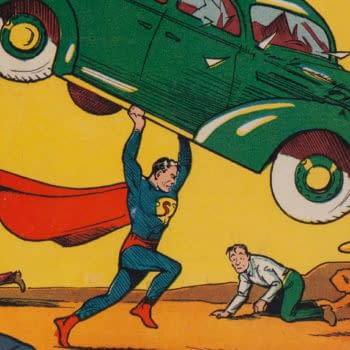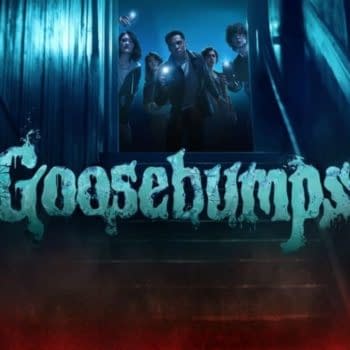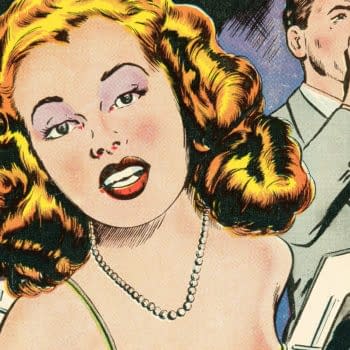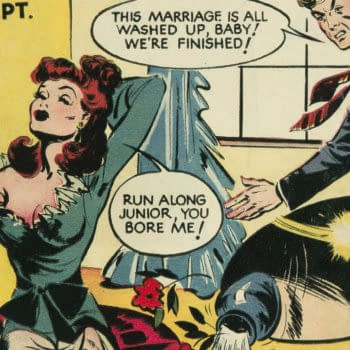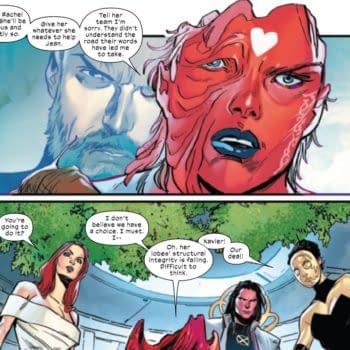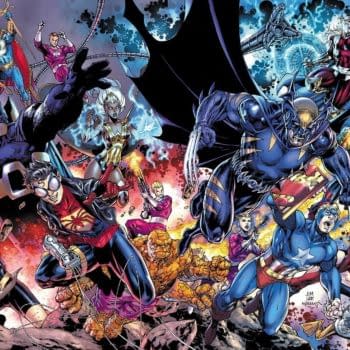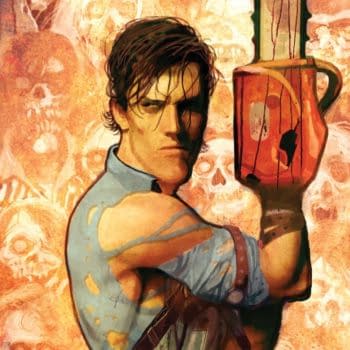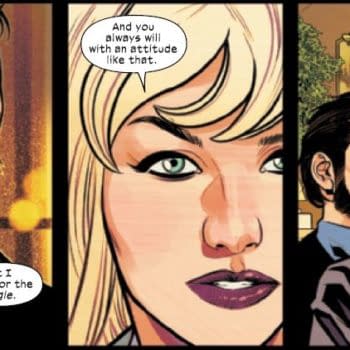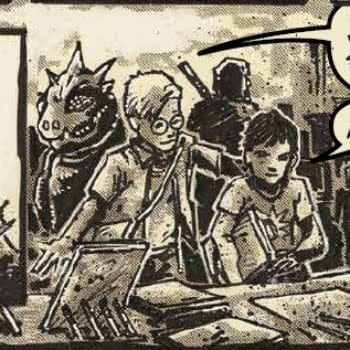Posted in: Comics, Original Artwork, Vintage Paper | Tagged: jon berk, lou fine, mystery men comics, vintage comics
Jon Berk On The Vintage Comic And Art Collector's Chase
We asked Jon Berk to share a couple of examples of the hard-won knowledge that helped him build one of the best collections ever.
Whenever I think about people I know who are very serious collectors — people who really put the work in to find what they want — I think of Indiana Jones. It's a franchise largely about the lengths people will go to unearth hidden treasures, after all. And also about how knowledge is power in those situations. Most serious collectors I know have not just one Indiana Jones story, but several. The comic it took them a lifetime to find. The discovery of something they didn't think really existed. The satisfaction of rescuing some old paper — and the knowledge that comes with it — so that future collectors can benefit too. Collector Jon Berk has been at this a very long time — as is pretty clear by the Comic Connect auction now in progress — and we asked him to share a couple of examples of the hard-won knowledge that helped him build one of the best collections of vintage comic books and original artwork ever.
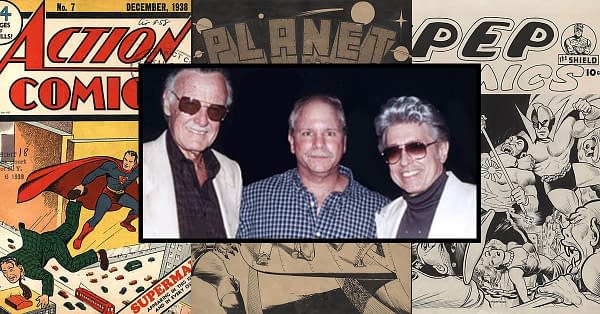
Your passion for cover recreations is on full display, certainly one of the best collections of those ever. How did you chose what you had done and by whom? How difficult was it getting ahold of the artists in the pre-Internet days?
I was tracking golden age artists and took it a step beyond from just getting a "convention sketch". I started with recreations from Creig Flessel and moved forward. Persistence, the greatness and kindness of these artists were wonderful. Comic conventions and letter writing and phone calls were the way I proceeded.
There were three types:
- Original art by the very artist who did the work. I commissioned it directly
- I would get it from original artist but I bought it on the "secondary market"
- The other is art of original artist done by someone else (like Murphy Anderson for Lou Fine)
It was quite the task at times, finding the artist, but I would follow CBG, and met some artists at San Diego Comic Con. A lot of phone calls and the kindness of the artists (and reasonable compensation). Most artists would do it, but a couple did not. Most were flattered.
One good story is that I determined that Lily Renee was in New York. Calling several artists, I finally tracked her down. I called her on the phone. She spoke with a bit of a Boston Brahim west side accent. When I found her through several calls, her reaction to me of doing this project was "Why on earth would you want that"?
Once she warmed to the task, she could not have been nicer. So I have a Lily Renee Planet Comics cover in full color.
I find the recreations just jump off the page with their color and size. As you may imagine, it got harder and harder to have them commissioned. These recreations are just great and special. I have kept many of these because of the personal contact. Most are ascribed to me. Look at the CAF Gallery as to what I had (and still have a number of them).
My favorite recreation is Amazing Man #15 by Lou Glanzman. His brother Sam did most of the comics in the family. lou went on to be a portrait artist. This cover by Lou Glanzman still blows me away… and do not forget Bob Fugitani and MLJ covers. (By the way I did not care how the artist created the recreation. Under the circumstances it was just a "hoot" to obtain these. It still was done by the original artist.)
The Mile High Fox books are so amazing. Copies in 9.8, after all these years, seems almost impossible. Can you share any stories about buying those, and caring for them for decades.
My favorite cover is Mystery Men Comics #3. From there it triggered my interest in obtaining other Fox books, especially those by Lou Fine. I obtained most of the runs. ("Runs" are a dwindling commodity) However, I was able to put together the Fox runs. Some Church Fox books do not exist.) Slowly, with the help from some of the larger personas in the hobby, I was able to go beyond the runs, and collect the smaller runs like Science Comics. If I could not find the Church copy I would focus on the Larson copies. It took a while to put the Wonderworlds together (but I did).
Storing the books was done with mylites, acid free boards and "shurlocks". I kept everything in a room with a dehumidifier. "The Comic Room". The Fox books are special and were the ones I focused on. These books even beat out my Centaur and "pre-Centaurs" addiction . Blame it on the Fox cover artists.
Quick Centaur story: Back before the Internet or Ebay, when I was visiting friends or relatives, I would always visit the local comics store, if there was one. The question I asked was always the same: "Do you have any Centaurs" The answer was always the same:" What are Centaurs.?"
One day I walked into a comic store on Long Island. I asked the question "Do you have any Centaurs?
The answer? "Which ones do you need" (!)
The next day I came back and bought fifty Centaurs at $20 a book. That is where I got many of my lower grade Centaurs, and the ones that were impossible to find
So there is the contrast between pristine Fox books and early (need a little help) Centaurs. Strange but true.




